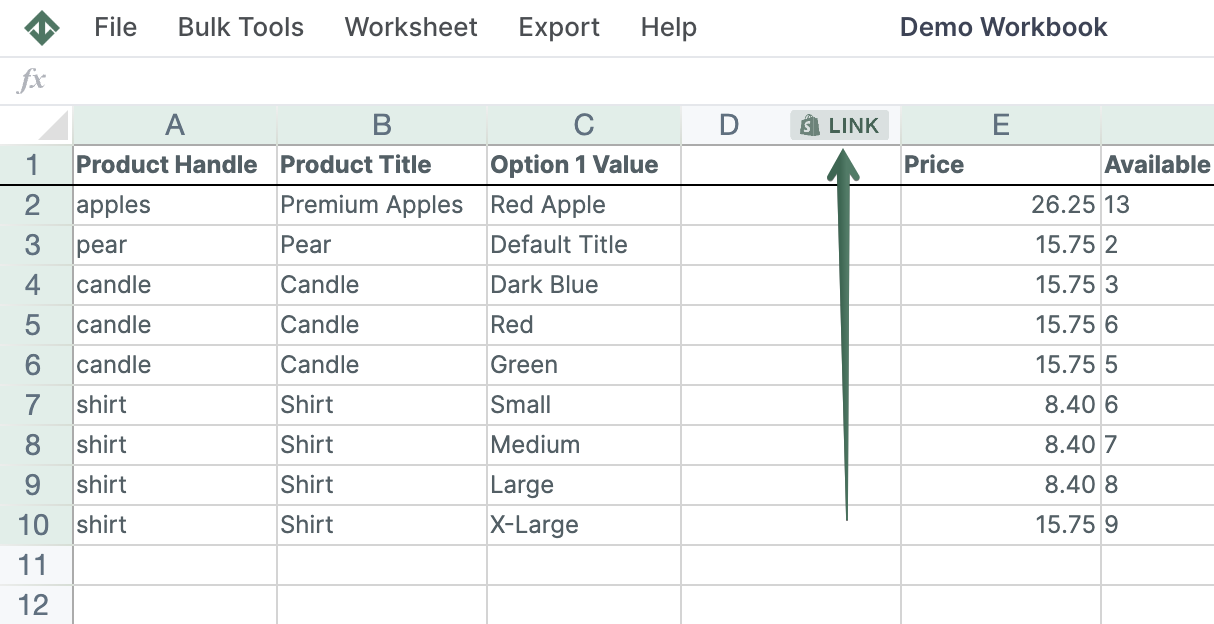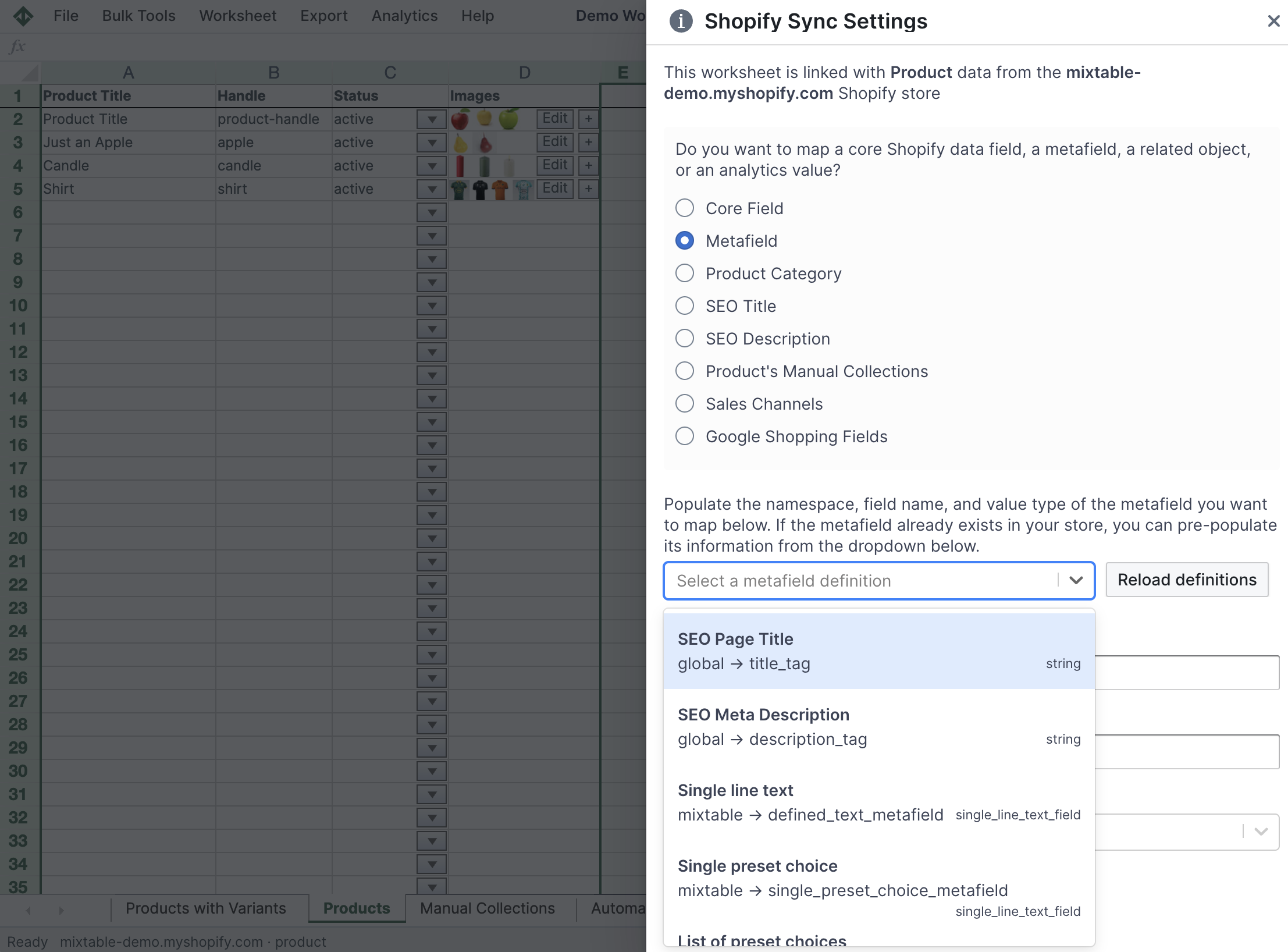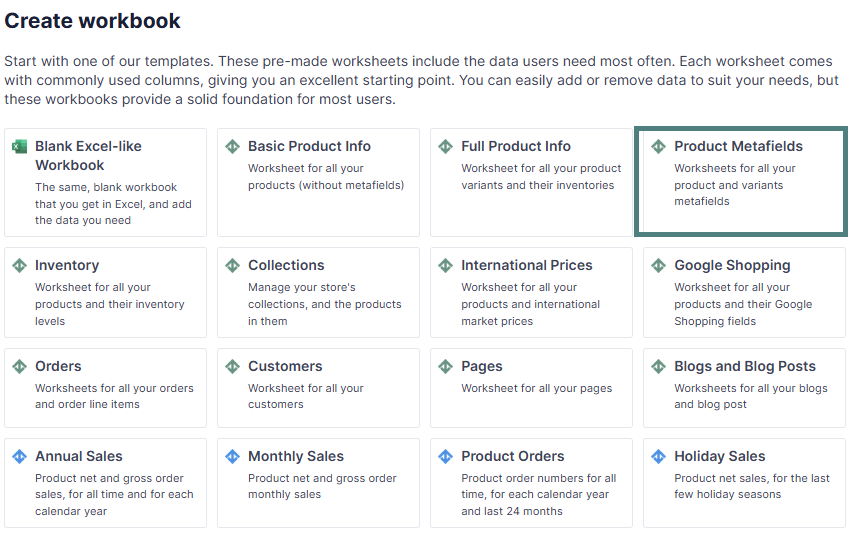Metafields are Shopify’s custom fields. You can use them to store and display information that doesn’t fit into the standard Shopify admin fields (for example: care instructions, sizing guides, badges, “complete the look” recommendations, or internal operations data).
Mixtable lets you view and edit metafields in a spreadsheet, then sync changes back to Shopify. It supports:
gid://... values)You can bulk edit metafields for these Shopify objects in Mixtable:
Mixtable shows these fields in an Excel/Google Sheets-style grid, so you can edit one row or hundreds at once.
To edit a metafield, map it to a column in the worksheet that syncs the same Shopify object (for example: product metafields in a Products worksheet). You’ll add a new column, set it to Metafield, then choose the metafield definition you want to sync.
Set up a workbook in Mixtable and create a worksheet that syncs the object you want to edit (Products, Variants, Collections, etc.).
To load new Shopify data, start by selecting an empty column — any column with a non-green header (green headers mean the column is already linked to Shopify data). Then, click the ⚡️ button in the column header to open the selection window to choose the data you want to pull in.

In the column settings window that opens, select Metafield.

Pick the metafield you want to sync:
Then click Save.
Mixtable adds the column and loads existing values from Shopify (if any).

Edit cells as needed (you can fill down, paste values, or edit in bulk).

Click Sync sheet to Shopify to push updates back to Shopify. It can take a few seconds for changes to appear in the admin/storefront.
If you want to bulk edit product and variant metafields, Mixtable’s Product Metafields workbook template lets you get started in seconds. The template creates a ready-to-use workbook with two worksheets, automatically populated with columns for all of your defined metafields—one sheet for product metafields and another for variant metafields.

Note: In Shopify, you can define a metafield to be limited to one or more values from a list of preset choices. These are single-line text metafields that either allow a single value or a list of values to be set, but these values have to be one of the defined preset choices.
When you map such a metafield to a column, Mixtable will auto-detect the possible preset choices and automatically add a dropdown to each cell in the column.
Use the dropdown to pick valid values (helpful for bulk edits and avoiding sync errors).
Reference metafields store links to other Shopify resources (for example: linking a product to “related products” or a page to a “size guide” page).
When you map a reference metafield in Mixtable, it adds a 🔍 picker button inside each cell so you can search and select items instead of manually entering IDs.
gid://shopify/Product/PRODUCTID).This is commonly used for “Complete the look” / “Shop the outfit” sections.
gid://shopify/ProductVariant/VARIANTID).gid://shopify/OnlineStorePage/PAGEID).gid://... values.You're ready!
Mixtable is an online spreadsheet designed to sync data with Shopify. It looks, feels, and behaves like Excel (including formulas), but runs in your browser. With Mixtable you can:
Best of all, you can sync changes back to Shopify with a single click. Find out more about the Mixtable suite of products here.